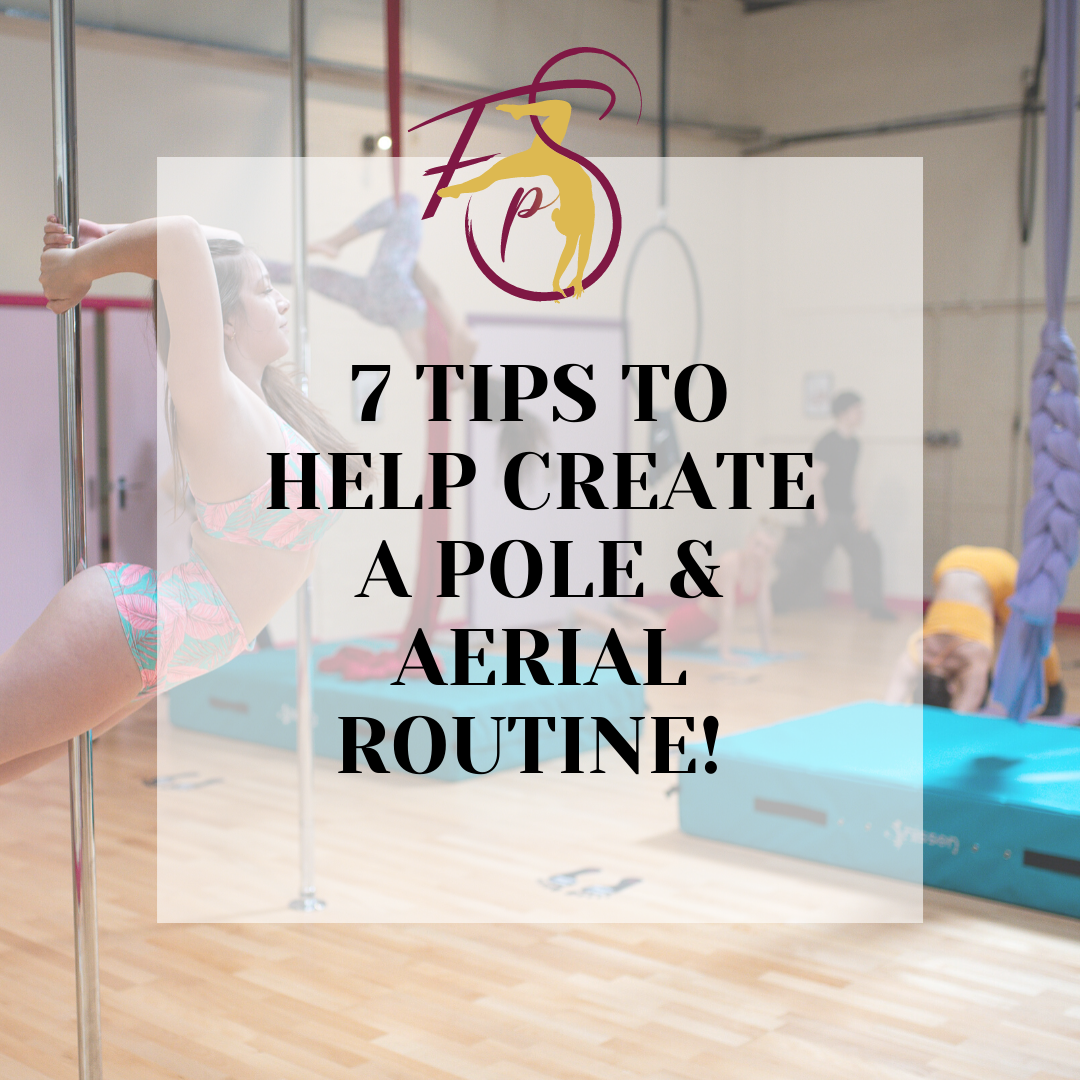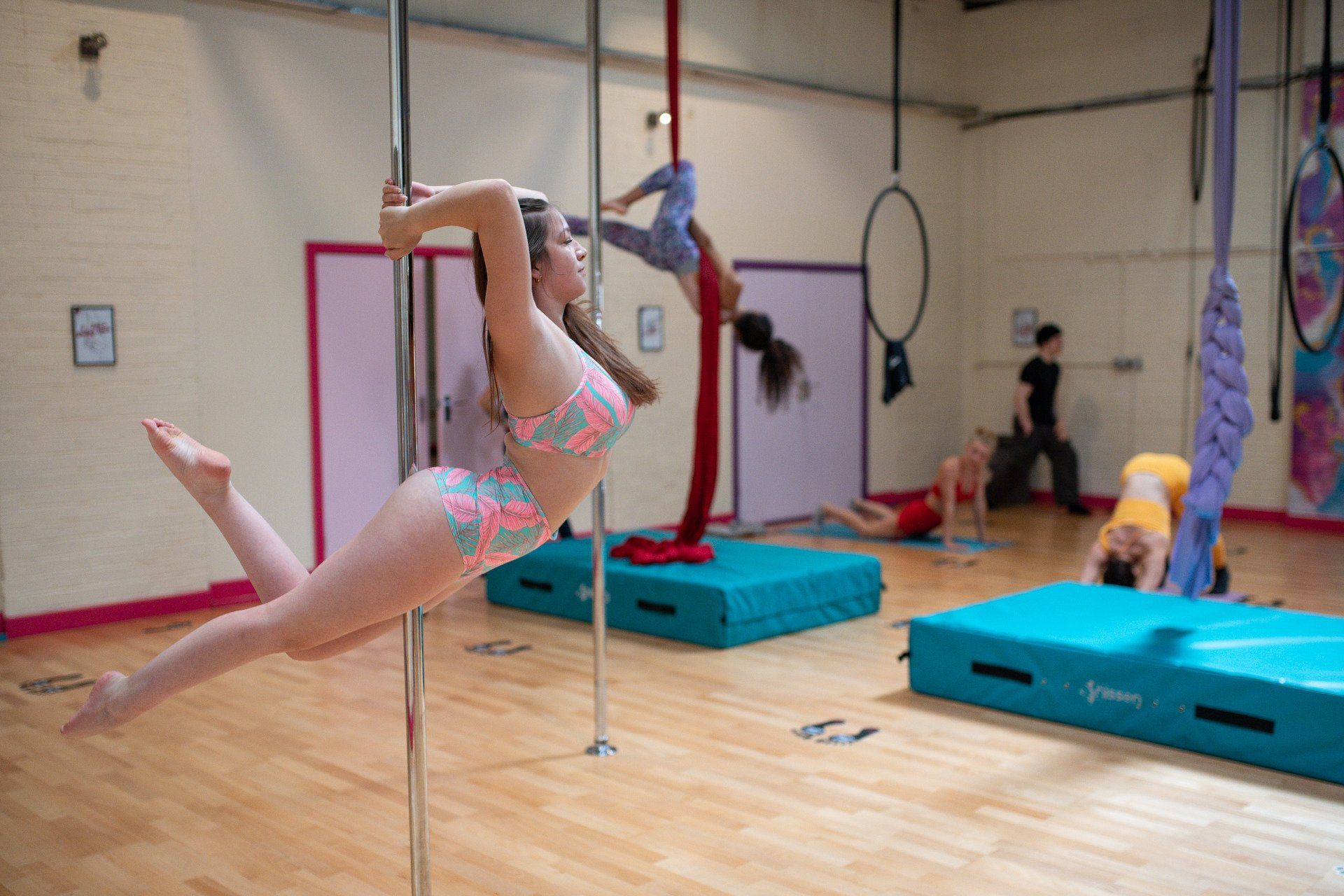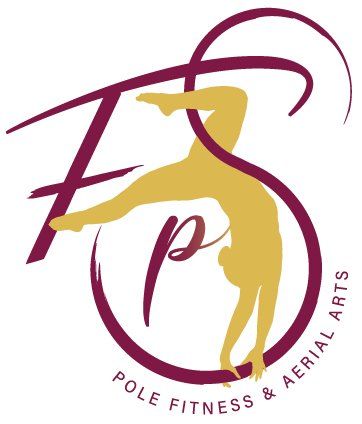
Choreographing a routine of any kind can sometimes be challenging. Where to start? What to do? Getting stuck and becoming frustrated can be very real hurdles to overcome, but fortunately, here’s a short cheat sheet that you can use to help you along the way. 1. Choose your music Find a song or piece of music that you love and can really connect to! This should be something that you can move along with easily and that you can really imagine yourself performing to. When choreographing a routine, you want to feel good in your routine, feel confident and have fun. Are you aiming for grace? Sensuality? Comedy? Power? Something else? 2. Split your music into sections Choose a song or piece of music that is around 3 to 3.5 minutes long. Of course, it can be longer if you want it to be, but remember, it’s hard to dance or perform for a long time, so the longer your music, the more tired you will be by the end. By splitting your music into 3 or 4 sections, you can create shorter sequences. This will make it easier to remember, easier to pace and easier to rehearse. Although we’ve made music the first two points on this list, don’t let yourself get bogged down because you can’t find a song you love. Having a song or piece of music ready to go can make choreographing your routine easier, but the most important thing that you can do is start creating your movement, you can always find your perfect song later. 3. Make a list of your favourite moves Make a list of your favourite moves that you can do well and consistently. This doesn’t include moves that you’re unsure of; these can go on a separate list. You should continue to practise them, and if they aren’t ready in time, scrap them and do something else! You want to choreograph a routine that you are going to enjoy on the night, so there’s no need to add extra pressure. 4. Putting your moves into combinations Now that you have a list of your favourite moves, you can start creating your combinations and sequences. If you have moves that are particularly difficult or impressive, try not to put them all together. We recommend putting one in the beginning of your routine and one at the end. Sometimes, creating combinations can be easier said than done, but there are some easy ways to beat writer’s block. Try finding a new way into or out of a move; or if one of your transitions is giving you a lot of grief, try working backwards from the finishing move. You might just surprise yourself and come up with something you like even more than your original idea! 5. Planning your sections When creating a pole routine for a competition or showcase, it’s important to know that you can use more than one pole. You could use two poles: one on static and one on spin. This isn’t mandatory, but it does help to break your routine up, give you a chance to rest a little, and allows the audience to see a bit of everything. Speaking of rest, whether you’re using a pole or aerial equipment, you might also want to consider adding a section of dance or floor work to your routine. Again, this isn’t mandatory, but spending a full 3 minutes on your chosen equipment can be incredibly difficult. It doesn’t have to be dance either. If dance and movement isn’t your thing, but acrobatics is your jam, split your routine up with this instead. There are no hard and fast rules. 6. Give yourself plenty of time Start choreographing your routine as early as you can. This will give you more time to come up with new and potentially better ideas, and give more time for your final routine to really take shape; it might look completely different from what you imagined when you first started! If certain moves or ideas aren’t working, don’t be afraid to throw things away. It’s much easier to make a good idea great than it is to make a bad idea good. Giving yourself as much time as possible will also give you much more time to rehearse, ultimately making your routine easier and more confident on the night. 7. Enjoy the process!

Can you introduce yourself? Who are you and what do you do? Hello, I am Itzel Salvatierra, I am from Mexico and I'm 36 years old. I'm a mother of two, I'm a circus artist, choreographer and Aerial Hoop coach. How did it all start? How did you get into aerial arts? I always knew I wanted to be an artist. If someone asked me what I want to do when I was a little kid, I would always say 'AN ARTIST'. I didn't really know what, but I know I liked it. I really wanted to do gymnastics, but my mum took me to ballet when I was 7, so I did that. After, I really appreciated it because it really helped me with my lines when I started artistic gymnastics. I did gymnastics from when I was 8 to 13, then I stopped for a little bit, and then went back and did it until I was 16. After gymnastics I did two years of Musical Theatre, which was amazing, I loved it! I really love acting because it comes very naturally to me. Yoga has always been a very big part of my life, it helps me a lot with many things, like strength, flexibility, focus and breathing. After Musical Theatre, I did Capoeira for four years which I feel really helped me with my spinning. After that I found circus! When/How did you decide to make it a profession? I moved to Puerto Vallarta, which is where I live now, and there was no circus at all. I started teaching in a gymnastic complex, where I met 5 dancers who were trying to make a circus show to sell in hotels and they asked me if I wanted to be a part of it. And I looked at them, thinking "This looks so hard, I don't know. I don't know if I want to be a circus artist." And circus had always had a bad rep, but I decided I needed the money, so I did it. So we started teaching ourselves Silks and Hand-to-Hand, which I fell in love with straight away. After one month of teaching ourselves, we started the shows in the hotels and I haven't stopped performing until now. So I basically learnt on the job! You've performed in many amazing shows, can you tell us what your process was like for joining Cirque du Soleil? One of the guys I was working with found out I had never seen Cirque du Soleil, and was so shocked, so he gave me all of these videos to watch. The first video I saw was 'Quidam' and I was mind blown, because it was so theatrical and dark and dramatic and very real. This is when I decided that I wanted to be part of Cirque du Soleil. So I sent all of my information and videos off to them in 2009, and I got a call the next day! Which - at the time I didn't know - wasn't very common. They asked me to come and audition in Las Vegas, which I couldn't afford at the time, so I had to say no, but luckily they came to Mexico City the next year, so I got to audition then. I made it to the end of the audition, where you get added to the talent books. After that I was asked to perform in a special event for 45 Degrees, which is Cirque du Soleil's special events company, which was a dream come true. I remember thinking "I did it! My dream is done! If I don't go further than this I'm super grateful." I hoped to get into a show, but I did it! I was there. Then the year after that I got asked to perform in 'Quidam' which was the show that inspired me to become a circus artist. It was a lot. It was very, very exciting. Out of all the shows you've performed in, what was your favourite and why? Le Noir was my favourite project, because it was a sexy show, which is my favourite style. I also met my husband on that contract. It was a great show; the company was so cool to work with and the cast were amazing. Do you choreograph your own routines and if yes what is your inspiration? The music. It's always about the music. It inspires me on what my character will be, or what type of movement I'll do. When I do my own acts, I really like the dramatic side: the darkness and a sexy style. Either something very warrior-like, or very dramatic, or something very sexy. My combos usually come off one shape that I have seen or been thinking about and it just unfolds from there. I don't know how, it just unfolds. It's a talent that I'm really grateful for. It just comes and suddenly I have a whole sequence.

Training without an instructor for the first time can be incredibly daunting. Questions like “Where should I start?” or “What do I practise?” can run around your head the whole time if you’ve never done it before. But despite the fear factor, training on your own can be a brilliant opportunity to progress, find your own style and really become familiar with your equipment. So, without any further introduction, here are some of the best tips for how to make the most of Free Space sessions and training on your own. 1. Plan ahead A plan is, without a doubt, the best thing you can bring with you to any Free Space session. Whether it’s moves that you learnt in class last week, some insane sequence you saw on Instagram months ago, or a beasty conditioning session for your dream move, planning what you want to practise ahead of time will help you get the absolute most out of it. 2. Set goals Setting goals is a great way to keep yourself on track, stick to your plan and stay motivated; not just for your session, but well into the future, too. If it helps to write your goals down, go for it. Crossing things off a to-do list is always a great feeling! They might be things that you want to conquer in a day or things that you might not achieve for months (or even years!) to come. For me, having a mix of both short- and long-term goals helps me get the most out of my sessions. 3. Try to avoid distractions (or put your phone down) I think mobile phones are brilliant! I’ve taken to writing down moves and combos that I want to do in my notes, and with all the amazing videos of people just being amazing on Instagram, I have almost endless inspiration at my fingertips. But if you’re anything like me, it’s all too easy to get sucked into the memes. Don’t let it happen! Stay focussed, stick to your plan and keep working on those moves. 4. Have fun! Pole Dancing/Aerial/Acrobatics is HARD! And some days are harder than others. Maybe you’re tired and those inverts are absolutely killing you. Or that sequence that you wanted to do is sooooooooo much harder than it looked when your favourite poler/aerialist/acrobat did it. Heck! Maybe that move you’ve been working on for weeks just will not happen. Whatever it is, it’s easy to get bogged down when nothing seems to be working, especially if your training buddy isn’t around to keep you from crying. These are the days to just throw it all away and HAVE FUN! Try something new, try something old, find a transition between your newest trick and your favourite trick. It doesn’t matter whether what you’re doing is easy or hard as long as you have a good time doing it. You never know, you might just turn that session around and teach yourself something new at the same time. 5. Stick with it Learning how to train on your own is process and it can take quite a bit of trial and error, but with a little bit of practise it can be incredibly rewarding and help you get even more from your classes. Keep coming back, keep making plans and conquering your goals, and, most of all, keep having fun with it, because that’s what this stuff is really all about. Good luck!


